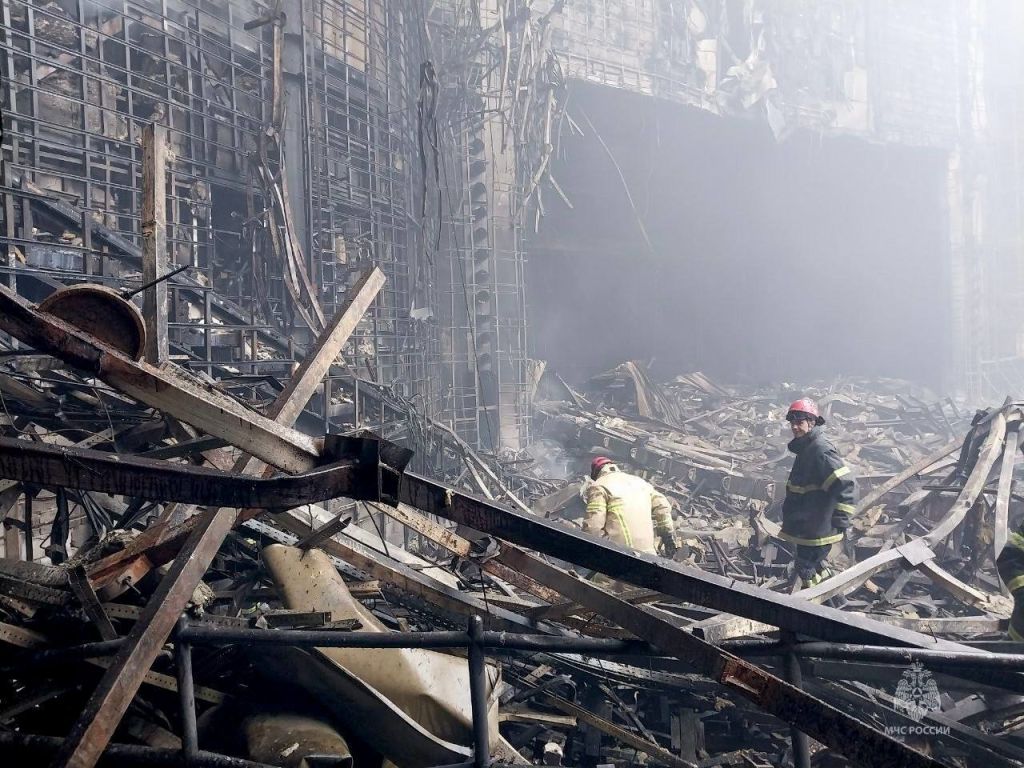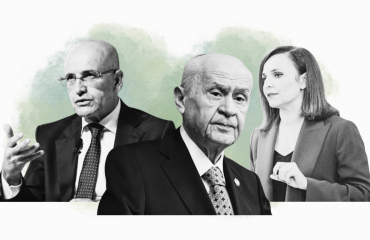

A view of damage at Crocus City Hall concert venue as search and rescue operation continues aftermath of the concert hall attack at the concert hall in Moscow, Russia on March 23, 2024. Intelligence, security and diplomatic circles state that the ISIS-K attacks are different than ISIS’ previous actions. Is this difference indicate a shift in tactics, targets or sponsorship? (Photo by Ministry of Emergencies of Russia/Handout/Anadolu Agency)
Since the bloody attack on the concert hall in Moscow, I have been speaking with sources from the intelligence, security, and diplomatic circles. The point they all converge on is that the March 22 attack of the ISIS Khorasan province branch, (ISIS-K) which killed 139 people in Moscow, differs from known ISIS actions in terms of targets and tactics. The same analysis is being applied to the attack on the Santa Maria Catholic Church in Istanbul by ISIS-K on January 28.
Have their targets changed?
Differences in ISIS actions in terms of their targets include:
1- ISIS’s Khorasan Branch began its initial activities in 2015 as the organization’s Central Asian branch. Within this framework, they organize among Muslim populations not only in China’s Xinjiang Uygur region and Pakistan but also in Afghanistan, Tajikistan, Uzbekistan, and among other Muslim populations in the Russian Federation. In terrorist actions, they have predominantly targeted Pakistan, Iran, and Afghanistan so far. Terrorist acts in Türkiye and Russia vary in terms of targeted geography.
2- Their target contents are also changing. For example, in Afghanistan (which might seem strange to most of us), they find the Taliban regime not strict enough and thus conduct terrorist acts to overthrow it. For instance, just one day before the March 22 Moscow attack, they killed at least 21 people in a suicide attack on a bank in Kandahar, Afghanistan. In Pakistan and Iran, they target mosques, specifically Shia mosques. ISIS’s actions aim to deepen religious and sectarian divisions within Muslim communities.
Therefore, their engagement in terrorist actions targeting churches in Türkiye and in regions of Russia where Muslims barely reside also signifies a change in target content. The Ministry of the Interior announced in December 2023 and January 2024 that, in cooperation with the National Intelligence Organization (MİT), it prevented attacks on churches, synagogues, and the Iraqi Embassy in Ankara by ISIS-K cells.
Have their tactics changed?
3- It is known that ISIS has used suicide bombers in its terrorist actions so far. This provides several advantages for terrorist organizations. For example, they only plan the trip to the scene of the attack; they avoid planning for escape and return – and also avoid the associated risks and expenses. Another advantage of suicide bombings for terrorist organizations is that it eliminates the possibility of militants being captured and subsequently providing information to the police or intelligence services about the organization.
For example, in Pakistan and Iran, a member of ISIS-K with a bomb attached to them enters the mosque during Friday prayers, when mosques are usually packed with large congregations, and detonates the bomb to inflict the most damage.
Let’s also remember that suicide bombers were used in the deadliest terrorist attacks in Türkiye, the Ankara Central Train Station bombing in 2015, which killed 109 people, and the Suruç bombing, which killed 34 people just before that.
However, in the last two ISIS attacks, in Istanbul and Moscow, suicide bombers were not used. Militants try to escape after causing terror, but they get caught.
In the Russian case, they are caught while fleeing to Ukraine. They claim to have come from Türkiye; according to the records we published, they entered and exited Türkiye just before the attack, but they returned not to Ukraine but to Russia.
Then Russian President Vladimir Putin called them “radical Islamists,” but he continued to point to Ukraine. Ukrainian President Volodymyr Zelensky denies this, but partly because he cannot control what is happening in his partially occupied country, where special forces and intelligence services from many countries in the United States and the G7 alliance have set up camps. French President Emmanuel Macron is not shy about saying this openly.
Sponsorship of ISIS
ISIS currently seems to shift its focus and tactics to the Middle East and Eastern Europe by changing its activities, targets, and tactics in the Middle East and Eastern Europe while addressing the apparent justification for the US military presence in Syria and its support for the Syrian branch of the PKK, the PYD/YPG.
ISIS’s Khorasan Province branch, ISIS-K, on the other hand, is shifting its area of operation from Central and South Asia to the Middle East and Eastern Europe by changing its targets and tactics.
It is also important to consider whether there has been a change in sponsorship along with ISIS’s targets and tactics.
Who is/are taking advantage of it?
It should not be forgotten that Central Asia and China are at one end of this knot. The US no longer sees China solely through the Pacific Ocean but as a global rival.
At a time when it is being discussed that Israel is the one opening the way for the growth of Hamas, supported by Iran, against the Palestine Liberation Organization, the question of who ISIS’s patron, or patrons, is also becomes important.
As we untie the knot, it gets more entangled.
What goes around comes around. Those who sow the wind reap the storm.


